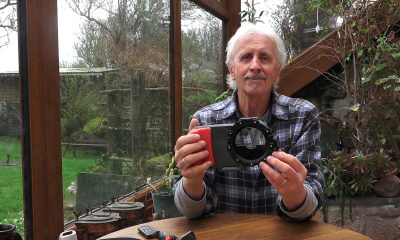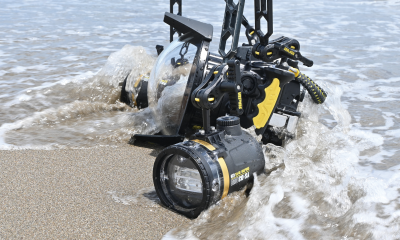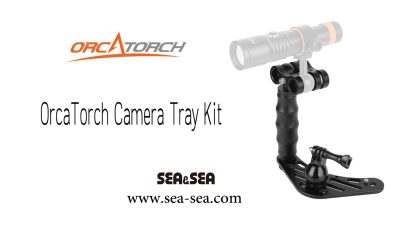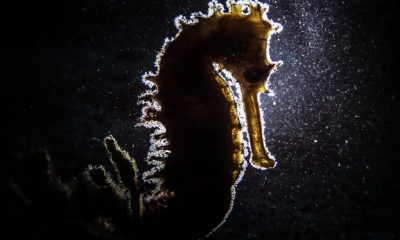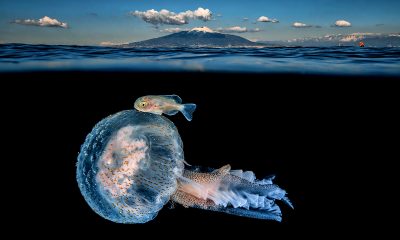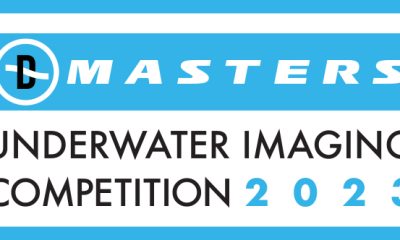News
Aquatica announce the A1Dcx Mark II Housing for the Canon EOS-1D X Mark II
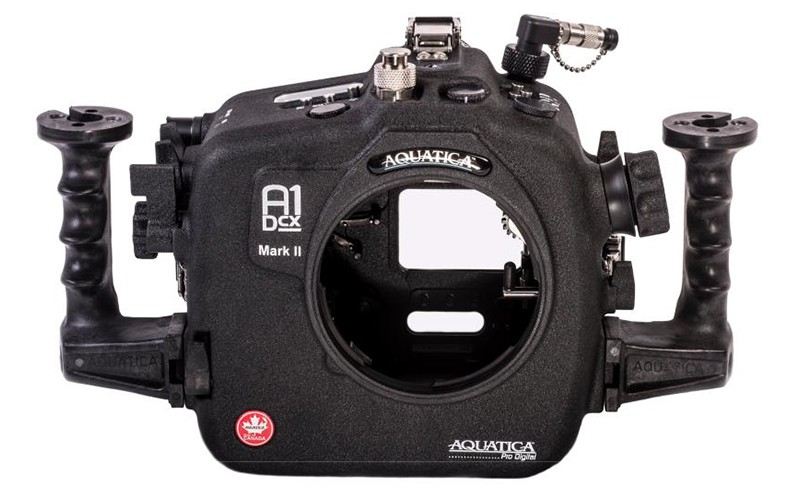
Aquatica has announced its new housing for Canon’s second generation of its most advanced action photography pro camera, the Canon EOS-1D X Mark II. With easy to reach controls, Aquatica’s new lens gear system and uncompromised viewing, this new housing puts the Canon 1D X MKII into the hands of photographers shooting in the world’s most demanding underwater environments.
Canon EOS-1D X Mark II Key Features
- 20.2MP full-frame CMOS sensor
- ISO 100–51,200, expandable to 409,600
- 4K video at 60fps
- Up to 120p frame rate at 1080p
- 4K frame grab
- 14fps/16 in LiveView mode in RAW or JPG
- 2-inch, 1.62 million dot resolution touch-sensitive LCD monitor
- 61-point High Density Reticular AF II system w/41 cross-type points
- 216-zone, 360k pixel RGB/IR metering sensor
- 30–1/8000 sec plus bulb; 1/250 sec X-sync
- Fast 2.0 compatible
- Dual CF Card slots
- Built-in GPS
- Magnesium alloy body, dust- and weather-sealed
ABOUT THE AQUATICA A1Dcx Mark II HOUSING
The Canon EOS-1D X MKII has a maximum of 14fps standard/16fps Live View burst rate and up to 170 RAW images per blast when using a Cfast card, as well as improved AF performance and 4K video capture, this camera is destined to be the camera of choice for sports photographers, wildlife photographers, and even for studio photography.
This new housing is no exception to Aquatica’s manufacture process as it is milled from a solid block of 6061 T6 aircraft grade aluminum. It is then black anodized and for further protection, a resistant, baked at high temperature, polyester electrostatic powder coat paint is added. This ensures that your investment will last a lifetime.
All video controls are designed for easy reach and smooth operation throughout the housing. This includes a next-generation lens gearing system with a redesigned housing pinion gear and a larger diameter lens gear selection, allowing for smoother transition while zooming/focusing in a video sequence. The Aquatica quick release tray delivers smooth and precise positioning of the camera in the housing and allows the user to insert and remove the camera using a simple push tab, allowing the camera to be removed from the back while keeping a lens and zoom gear attached.
The video record on/off control lever is perfectly located on the right side of the housing. This lever is easily controlled with the thumb using a slight forward motion. All push buttons are made from high quality type 304 stainless steel and operate smoothly for a natural feel and intuitive operation.
SURVEYOR MOISTURE AND VACUUM SENSOR, PUMP & VALVE INCLUDED
Aquatica’s A1Dcx MkII ships with their new atmospheric pressure sensitive circuitry and moisture detector as well as the valve and pump. Aquatica decided to have this add on as a standard feature on your housing to allow you to monitor the vacuum pressure inside the housing.
The moisture detection circuit is on constant guard duty, ready to inform you, by way of an audible and visual signal, of any infiltration, no matter how small. This advanced SURVEYOR circuit also integrates temperature compensation, preventing change in ambient temperature from affecting its accuracy. A few strokes of a pump will light up a green LED, giving you the confirmation that the housing sealing integrity is impeccable.
MORE ABOUT THE HOUSING’S UNIQUE FEATURES
The A1Dcx Mark II housing has three bulkhead access holes ready to accept external accessories such as Aquatica’s Remote trigger, their Water Wizard (an external radio transceiver housing) and third party external monitors and other accessories.
The A1Dcx Mark II model 20082-NK comes equipped with two classic Nikonos connectors of the newest type, these strobe connectors are easy field interchangeable in minutes, while the 20082-KM model is supplied with a time proven 5-pin Ikelite connector.
PROVEN AQUATICA PERFORMANCE
More than 30 years of expertise have helped craft this A1Dcx Mark II ergonomic design. It’s a design strongly influenced by working closely, and listening to the input of professional image makers from around the world. The result is an unparalleled attention to detail and expertly crafted solutions.
Viewing is through Aquatica’s own exceptional Galileo-type eye piece. This high quality and coated optical finder gives a bright and full view of the finder. The A1Dcx Mark II is also fully compatible with Aquatica’s accessory Aqua View 180, and Aqua View 45 finder. For those who are seeking the ultimate in still image viewing, these two enhanced Aqua View finders deliver second-to-none clarity, providing tack sharp corner to corner viewing for composing and critical focusing.
The A1Dcx Mark II also retains Aquatica’s trademark molded grips, the industry standard of comfort for the last 25 years. Lightweight and molded of one piece, they never come unglued or corrode. On top of both grips, threaded mounting holes are ready to accept the popular mounting bracket of Aquatica’s Technical Lighting Control-Delta 3 system as well as being compatible with most current strobes and lighting arms on the market. An extra mounting point for a focus/video light or other accessories is included on top of the housing and three additional mounting points are provided under the housing for various brackets, supports or tripods.
The A1Dcx Mark II housing belongs to one of the most established and comprehensive port and accessories system of the industry. The Aquatica port system, with its critically precise optical property, has been a stable platform on which thousands of photographers have relied on for more than 20 years to produces state of the art images.
The lightweight A1Dcx Mark II benefits from the finest material available in the metallurgic industry and is carefully crafted from a selected alloy of aircraft-grade aluminum. This housing still has the same standard 90m/328ft depth rating that can be factory upgraded to 130m/425ft depth rating on request. Its knurled knobs and oversized controls mean easy operation in all kinds of diving conditions.
Housing equipped with Aquatica’s 180 View Finder #20054
SPECIFICATIONS
Depth Rating & Dimension
- 100m/328ft (upgradeable to 130m/426ft)
- Dimensions: Height: 8,49’’ / Depth: 5,3’’
- Width: No grips: 8,63’’ / With grips: 13,03’’
- Weight (with grips attached): 8,5 lbs
Construction of shell
- 6061 T6 Marine Grade aluminum
- Anodized to MIL-A-8625 (type 2, Class 2 specification)
- Powder coated with certified A.A.M.A. 2603-98 Polyester coating
- Baked at 177c/350F (specification ASTM D2794
Mounting points for strobes arms, lighting fixtures and/or tripod
- 5 standard ¼”-20 sized threaded holes, two on each hand grips and one centered on top of the housing
- 3 standard ¼”-20 sized threaded holes located at the base of the housing
- Standard features last line
- 5 bulkhead access entry point for various accessories
Control shafts and push pins
- Type 304 marine grade Stainless steel
- All shaft double sealed with double O-rings
- All push pins sealed with Quad Rings
Standard features
- Ergonomically optimized for diving conditions
- Oversized knurled controls knobs
- Sturdy comfortable grips
- Extended shutter release
- Port lock mechanism
- Lens release mechanism
- Standard high quality Galileo Optical Eye piece
- Dual sacrificial anodes (front and rear mounted)
- 5 accessory bulkhead entry points
- Surveyor Moisture and vacuum sensor, pump & valve
- Form fitting Grips (2x)
RETAIL PRICE AT $4,849.00 USD
For more information visit www.aquatica.ca.
Blogs
Northern Red Sea Reefs and Wrecks Trip Report, Part 3: The Mighty Thistlegorm

Jake Davies boards Ghazala Explorer for an unforgettable Red Sea diving experience…
Overnight, the wind picked up, making the planned morning dive a bit bumpy on the Zodiacs to the drop point on Thomas Reef. There, we would dive along the reef before descending through the canyon and then passing under the arch before ascending the wall with a gentle drift. The site provided great encounters with more pelagic species, including shoals of large barracuda, tuna, and bigeye trevally.
Once back on the boat, it was time to get everything tied down again as we would head back south. This time, with the wind behind us, heading to Ras Mohammed to dive Jackfish Alley for another great gentle drift wall dive before then heading up the coast towards the Gulf of Suez to moor up at the wreck of the Thistlegorm. This being the highlight wreck dive of the trip and for many onboard, including myself, it was the first time diving this iconic wreck. I had heard so much about the wreck from friends, and globally, this is a must on any diver’s list. Fortunately for us, there was only one other boat at the site, which was a rarity. A great briefing was delivered by Ahmed, who provided a detailed background about the wreck’s history along with all the required safety information as the currents and visibility at the site can be variable.

Kitting up, there was a lot of excitement on deck before entering the water and heading down the shoreline. Descending to the wreck, there was a light northerly current which reduced the visibility, making it feel more like the conditions that can be found off the Welsh coast. At 10m from the bottom, the outline of the wreck appeared as we reached the area of the wreck which had been bombed, as our mooring line was attached to part of the propeller shaft. Arriving on deck, instantly everywhere you looked there were many of the supplies which the ship was carrying, including Bren Carrier tanks and projectiles that instantly stood out.

We headed around the exterior, taking a look at the large propeller and guns mounted on deck before entering the wreck on the port side to take a look in the holds. It was incredible to see all the trucks, Norton 16H, and BSA motorcycles still perfectly stacked within, providing a real snapshot in time.

Overall, we had four dives on the Thistlegorm, where for all of the dives we were the only group in the water, and at times, there were just three of us on the whole wreck, which made it even more special, especially knowing that most days the wreck has hundreds of divers. Along with the history of the wreck, there was plenty of marine life on the wreck and around, from big green turtles to batfish, along with shoals of mackerel being hunted by trevally. Some unforgettable dives.

The final leg of the trip saw us cross back over the Suez Canal to the Gobal Islands where we planned to stay the night and do three dives at the Dolphin House for the potential of sharing the dive with dolphins. The site, which included a channel that was teeming with reef fish, especially large numbers of goatfish that swam in large shoals along the edge of the reef. These were nice relaxing dives to end the week. Unfortunately, the dolphins didn’t show up, which was okay as like all marine life they are difficult to predict and you can’t guarantee what’s going to be seen. With the last dive complete, we headed back to port for the final night where it was time to clean all the kit and pack before the departure flight the next day.

The whole week from start to finish on Ghazala Explorer was amazing; the boat had all the facilities you need for a comfortable week aboard. The crew were always there to help throughout the day and the chefs providing top quality food which was required after every dive. The itinerary providing some of the best diving with a nice mixture of wreck and reef dives. I would recommend the trip to anyone, whether it’s your first Red Sea liveaboard in the Red Sea or you’re revisiting. Hopefully, it’s not too long before I head back to explore more of the Red Sea onboard Ghazala Explorer.

To find out more about the Northern Red Sea reef and wrecks itineraries aboard Ghazala Explorer, or to book, contact Scuba Travel now:
Email: dive@scubatravel.com
Tel: +44 (0)1483 411590
Photos: Jake Davies / Avalon.Red
Blogs
Northern Red Sea Reefs and Wrecks Trip Report, Part 2: Wall to Wall Wrecks

Jake Davies boards Ghazala Explorer for an unforgettable Red Sea diving experience…
The second day’s diving was a day full of wreck diving at Abu Nuhas, which included the Chrisoula K, Carnatic, and Ghiannis D. The first dive of the day was onto the Chrisoula K, also known as the wreck of tiles. The 98m vessel remains largely intact where she was loaded with tiles which can be seen throughout the hold. The stern sits at 26m and the bow just below the surface. One of the highlights of the wreck is heading inside and seeing the workroom where the machinery used for cutting the tiles are perfectly intact. The bow provided some relaxing scenery as the bright sunlight highlighted the colours of the soft coral reef and the many reef fish.

Following breakfast, we then headed to the next wreck, which was the Carnatic. The Carnatic is an 89.9m sail steamer vessel that was built in Britain back in 1862. She ran aground on the reef back in 1869 and remains at 27m. At the time, she was carrying a range of items, including 40,000 sterling in gold. An impressive wreck where much of the superstructure remains, and the two large masts lay on the seafloor. The wooden ribs of the hull provide structures for lots of soft corals, and into the stern section, the light beams through, bouncing off the large shoals of glass fish that can be found using the structure as shelter from the larger predators that are found outside of the wreck.

The final wreck at Abu Nuhas was the Ghiannis D, originally called ‘Shoyo Maru,’ which was 99.5m long and built in Japan back in 1969 before becoming a Greek-registered cargo ship in 1980. The ship then ran aground on the reef on April 19th, 1983, and now sits at the bottom at a depth of 27m. Heading down the line, the stern of the ship remains in good condition compared to the rest of the hull. The highlight of the wreck, though, is heading into the stern section and down the flights of stairs to enter the engine room, which remains in good condition and is definitely worth exploring. After exploring the interior section of the ship, we then headed over to see the rest of the superstructure, where it’s particularly interesting to see the large table corals that have grown at the bow relatively quickly considering the date the ship sank. After surfacing and enjoying some afternoon snacks, we made sure everything was strapped down and secured as we would be heading north and crossing the Gulf of Suez, where the winds were still creating plenty of chop.

The next morning, it was a short hop to Ras Mohammed Nature Reserve for the next couple of days of diving. The 6am wake-up call came along with the briefing for the first site we would be diving, which was Shark & Yolanda. The low current conditions allowed us to start the dive at Anemone City, where we would drift along the steep, coral-filled wall. These dives involved drifts, as mooring in Ras Mohammed wasn’t allowed to protect the reefs. As a dive site, Shark & Yolanda is well-known and historically had a lot of sharks, but unfortunately not so many in recent years, especially not so early in the season. However, there was always a chance when looking out into the blue.

The gentle drift took us along the steep walls of the site, with plenty of anemone fish to be seen and a huge variety of corals. It wasn’t long into the dive before we were accompanied by a hawksbill turtle, who drifted with us between the two atolls before parting ways. Between the two reefs, the shallow patch with parts of coral heads surrounded by sand provided the chance to see a few blue-spotted stingrays that were mainly resting underneath the corals and are always a pleasure to see. With this being the morning dive, the early sunlight lit up the walls, providing tranquil moments. Looking out into the blue, there was very little to be seen, but a small shoal of batfish shimmering underneath the sunlight was a moment to capture as we watched them swim by as they watched us.

Towards the end of the dive, we stopped at the wreck of the Jolanda where the seafloor was scattered with toilets from the containers it was carrying. This provided a unique site to make a safety stop, which was also accompanied by a large barracuda slowly swimming by, along with a hawksbill turtle calmly swimming over the reef as the sun rays danced in the distance.
For the next dive, we headed north to the Strait of Tiran to explore the reefs situated between Tiran Island and Sharm El Sheik, which were named after the British divers who had found them. We started on Jackson before heading to Gordons Reef, where we also did the night dive. All the atolls at these sites provided stunning, bustling coral reefs close to the surface and steep walls to swim along, which always provided the opportunity to keep an eye out for some of the larger species that can be seen in the blue. Midwater around Jackson Reef was filled with red-toothed triggerfish and shoals of banner fish, which at times were so dense that you couldn’t see into the blue. Moments went by peacefully as we enjoyed the slow drift above the reef, watching these shoals swim around under the mid-afternoon sun.

The night dive at Gordon’s Reef was mainly among the stacks of corals surrounded by sand, which was great to explore under the darkness. After some time circling the corals, we came across what we were really hoping to find, and that was an octopus hunting on the reef. We spent the majority of the dive just watching it crawl among the reef, blending into its changing surroundings through changes in colour and skin texture. It’s always so fascinating and captivating to watch these incredibly intelligent animals, in awe of their ability to carry out these physical changes to perfectly blend into the reef. Before we knew it, it was time to head back to the boat to enjoy a well-deserved tasty dinner prepared by the talented chefs onboard.
Check in for the 3rd and final part of this series from Jake tomorrow!
To find out more about the Northern Red Sea reef and wrecks itineraries aboard Ghazala Explorer, or to book, contact Scuba Travel now:
Email: dive@scubatravel.com
Tel: +44 (0)1483 411590
Photos: Jake Davies / Avalon.Red
-

 News3 months ago
News3 months agoHone your underwater photography skills with Alphamarine Photography at Red Sea Diving Safari in March
-

 News3 months ago
News3 months agoCapturing Critters in Lembeh Underwater Photography Workshop 2024: Event Roundup
-

 Marine Life & Conservation Blogs2 months ago
Marine Life & Conservation Blogs2 months agoCreature Feature: Swell Sharks
-

 Blogs2 months ago
Blogs2 months agoMurex Resorts: Passport to Paradise!
-

 Blogs2 months ago
Blogs2 months agoDiver Discovering Whale Skeletons Beneath Ice Judged World’s Best Underwater Photograph
-

 Gear Reviews3 months ago
Gear Reviews3 months agoGear Review: Oceanic+ Dive Housing for iPhone
-

 Marine Life & Conservation2 months ago
Marine Life & Conservation2 months agoSave the Manatee Club launches brand new webcams at Silver Springs State Park, Florida
-

 News3 months ago
News3 months agoWorld’s Best Underwater Photographers Unveil Breathtaking Images at World Shootout 2023





